Fitness for Fitbit
2022-2024
Overview
I led the end-to-end fitness experience for Pixel Watch 3 and co-defined the future of fitness at Fitbit alongside PM partners. Building on the foundation of the first-gen Pixel Watch, I led a small design team and launched key features including heart rate training, advanced running metrics, and Readiness & Load training.
Role
UX Design lead
/ 2 direct reports
- Led the end-to-end fitness experience by guiding design execution and feature development
- Co-defined fitness strategy with PMs to shape the product direction of Pixel Watch products
Impact
Defined and launched Pixel Watch 3’s fitness experience and influence Fitbit’s strategic direction
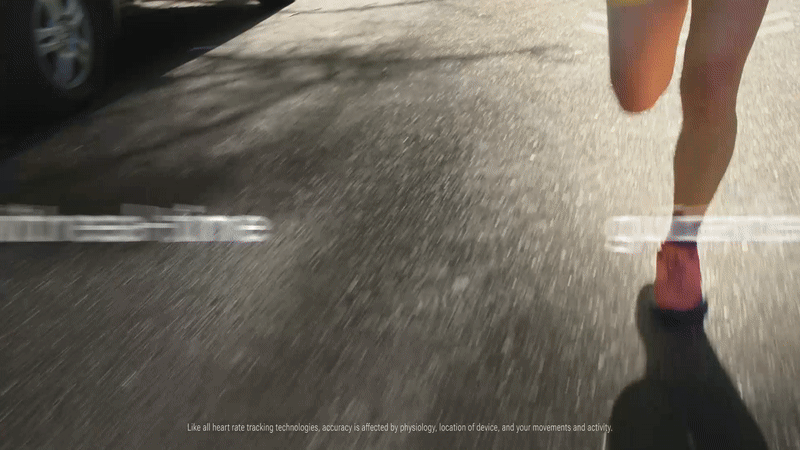
Challenge
Pixel Watch 3 was Google’s third-generation wearable. With growing competition in the health & fitness space, we needed to transition from a data tracking and dashboard product that Fitbit once was, to a coaching product in order to differentiate through intelligence and coaching.
How might we redefine the fitness product from a data analyzer to a proactive, personalized, and motivating coaching experience?
Defined product strategy: Start with one segment and expand later
I worked with the PMs on the team to define a product strategy for Pixel Watch 3. We aim to build a world-class wearable for fitness enthusiasts first, starting from cardio exercises, which is built on the advantage of heart rate tracking on Pixel Watch. And we can expand to other fitness verticals in the long-term.
I led the creation of an end-to-end vision to demonstrate the fitness coaching experience across watch and mobile. This artifact shows the team’s ambition with a one-year outlook, so it is grounded in reality but communicates the direction we want to go.
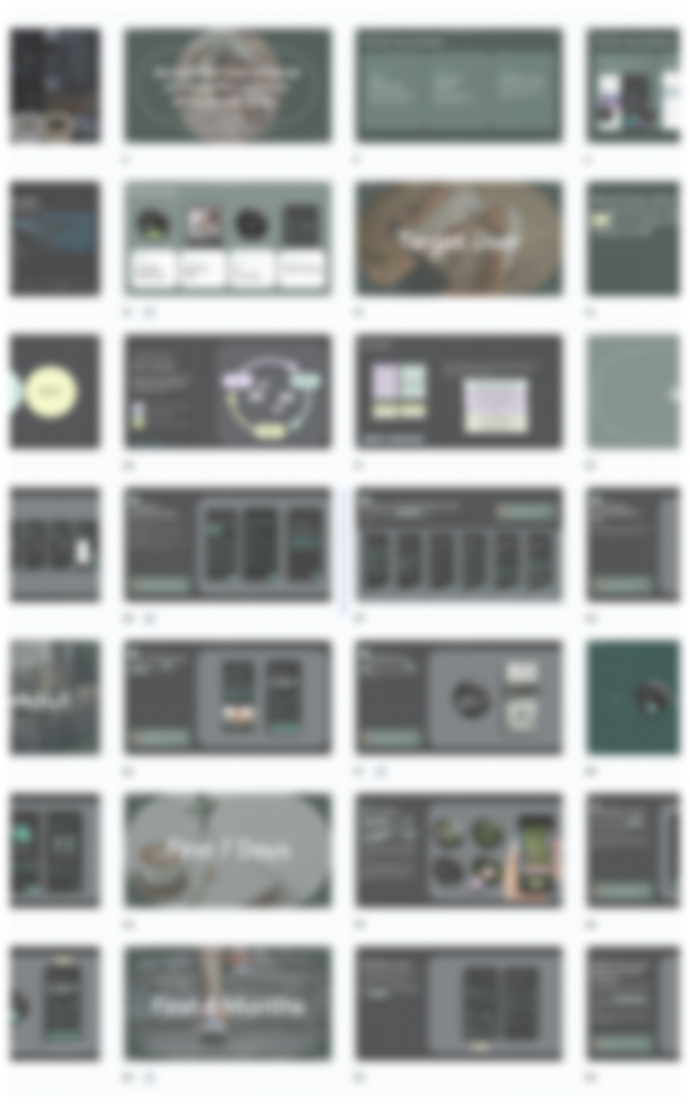
I co-created the product and design strategy for the Fitness area on Watch

Build your custom run
Create warmups, cool downs, intervals and pace and HR targets. Then access saved workouts and track your PRs.
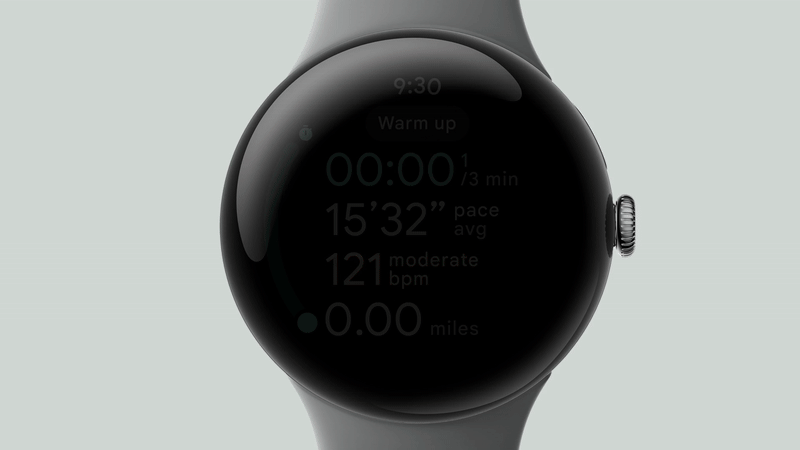
In-workout coaching to keep you on track
Start one of your custom runs and get audio and haptic cues for when to sprint, cool down or maintain pace.
More accurate workout tracking for fitness enthusiasits
We knew from field research
Leading with realistic insights
When I joined the team, the UXR was often conducted on static mockups in Figma. It wasn’t an effective way to get realistic feedback for the wearable experience, so I advocated for updating our our UXR testing methods to test the wearable in realistic settings outside of labs, and helped the team up-skill the prototyping skills for wearables using Protopie. This shift from traditional lab testing has dramatically improved the quality of our user insights and final designs.
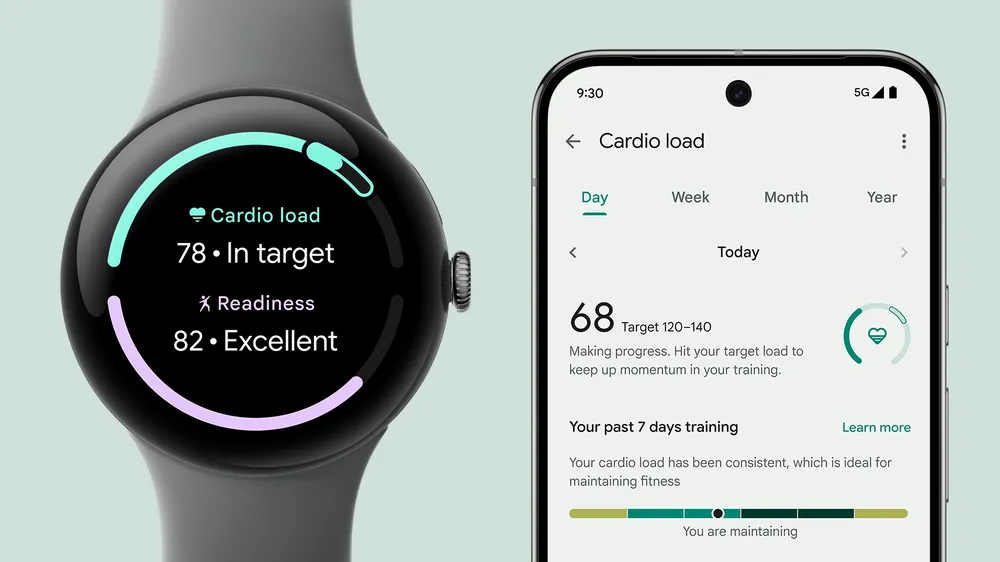
Know what your body is ready for each day.
We worked with a clinical expert and introduced a new metric that can inform how hard you work your heart.
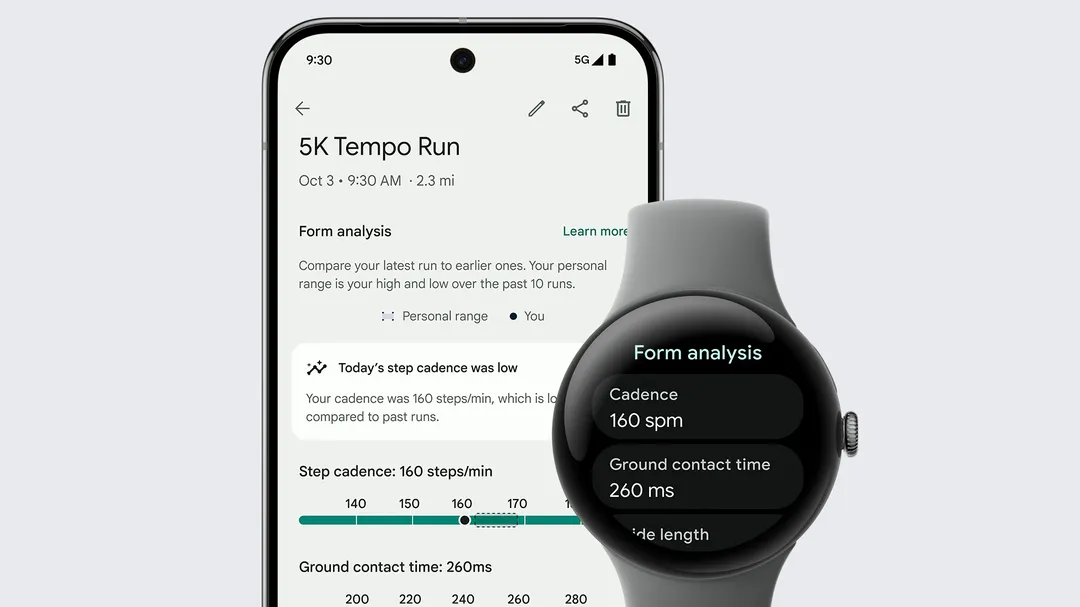
Analyze your run
Advanced motion sensing measures your cadence, stride length, vertical oscillation and more to help improve run performance.
Impact
- Launched Pixel Watch 3’s fitness experience and influence Fitbit’s strategic direction.
- Read a product review on CNET
Fitness for Fitbit
2022-2024
Overview
I led the end-to-end fitness experience for Pixel Watch 3 and co-defined the future of fitness at Fitbit alongside PM partners. Building on the foundation of the first-gen Pixel Watch, I led a small design team and launched key features including heart rate training, advanced running metrics, and Readiness & Load training.
Role
UX Design lead
/ 2 direct reports
- Led the end-to-end fitness experience by guiding design execution and feature development
- Co-defined fitness strategy with PMs to shape the product direction of Pixel Watch products
Impact
Defined and launched Pixel Watch 3’s fitness experience and influence Fitbit’s strategic direction

Challenge
Pixel Watch 3 was Google’s third-generation wearable. With growing competition in the health & fitness space, we needed to transition from a data tracking and dashboard product that Fitbit once was, to a coaching product in order to differentiate through intelligence and coaching.
How might we redefine the fitness product from a data analyzer to a proactive, personalized, and motivating coaching experience?
Defined product strategy: Start with one segment and expand later
I worked with the PMs on the team to define a product strategy for Pixel Watch 3. We aim to build a world-class wearable for fitness enthusiasts first, starting from cardio exercises, which is built on the advantage of heart rate tracking on Pixel Watch. And we can expand to other fitness verticals in the long-term.
I led the creation of an end-to-end vision to demonstrate the fitness coaching experience across watch and mobile. This artifact shows the team’s ambition with a one-year outlook, so it is grounded in reality but communicates the direction we want to go.

I co-created the product and design strategy for the Fitness area on Watch
More accurate workout tracking for fitness enthusiasits
We knew from field research
Standard workout
The entire workout is one session
Video workout
The entire workout is one session and tied to a video
Structured workout
The workout has different segments (warmup, workout)

Build your custom run
Create warmups, cool downs, intervals and pace and HR targets. Then access saved workouts and track your PRs.

In-workout coaching to keep you on track
Start one of your custom runs and get audio and haptic cues for when to sprint, cool down or maintain pace.
Leading with realistic insights
When I joined the team, the UXR was often conducted on static mockups in Figma. It wasn’t an effective way to get realistic feedback for the wearable experience, so I advocated for updating our our UXR testing methods to test the wearable in realistic settings outside of labs, and helped the team up-skill the prototyping skills for wearables using Protopie. This shift from traditional lab testing has dramatically improved the quality of our user insights and final designs.
Know what your body is ready for each day.
We worked with a clinical expert and introduced a new metric that can inform how hard you work your heart.

Analyze your run
Advanced motion sensing measures your cadence, stride length, vertical oscillation and more to help improve run performance.

Impact
- Launched Pixel Watch 3’s fitness experience and influence Fitbit’s strategic direction.
- Read a product review on CNET
Fitness for Fitbit
2022-2024
Overview
I led the end-to-end fitness experience for Pixel Watch 3 and co-defined the future of fitness at Fitbit alongside PM partners. Building on the foundation of the first-gen Pixel Watch, I led a small design team and launched key features including heart rate training, advanced running metrics, and Readiness & Load training.
Role
UX Design lead
/ 2 direct reports
- Led the end-to-end fitness experience by guiding design execution and feature development
- Co-defined fitness strategy with PMs to shape the product direction of Pixel Watch products
Impact
Defined and launched Pixel Watch 3’s fitness experience and influence Fitbit’s strategic direction

Challenge
Pixel Watch 3 was Google’s third-generation wearable. With growing competition in the health & fitness space, we needed to transition from a data tracking and dashboard product that Fitbit once was, to a coaching product in order to differentiate through intelligence and coaching.
How might we redefine the fitness product from a data analyzer to a proactive, personalized, and motivating coaching experience?
Defined product strategy: Start with one segment and expand later
I worked with the PMs on the team to define a product strategy for Pixel Watch 3. We aim to build a world-class wearable for fitness enthusiasts first, starting from cardio exercises, which is built on the advantage of heart rate tracking on Pixel Watch. And we can expand to other fitness verticals in the long-term.
I led the creation of an end-to-end vision to demonstrate the fitness coaching experience across watch and mobile. This artifact shows the team’s ambition with a one-year outlook, so it is grounded in reality but communicates the direction we want to go.
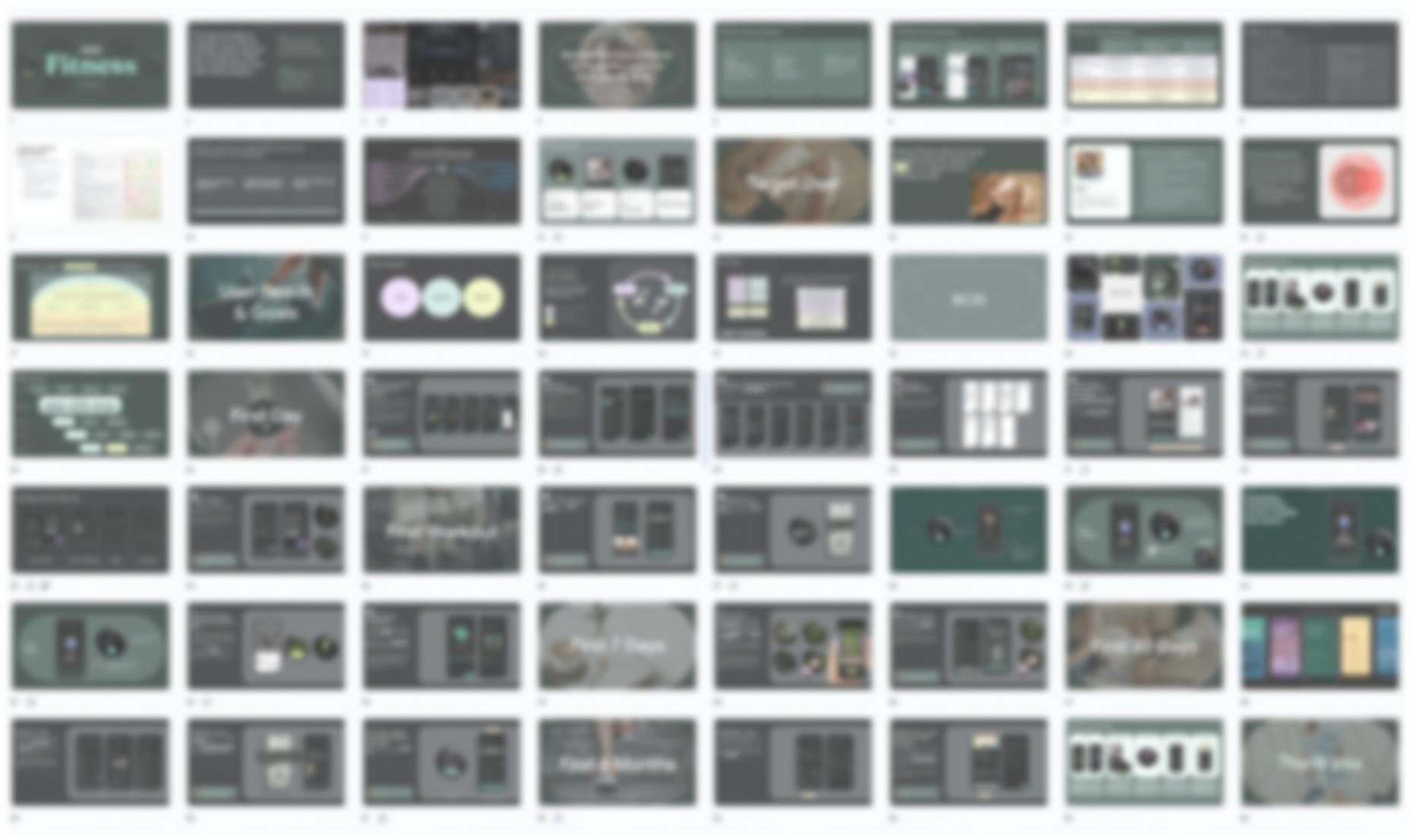
I co-created the product and design strategy for the Fitness area on Watch
Introduced structured workout tracking
From field research, we know runners use different training methodologies, so I proposed a concept of “structured workout”, which allows users to create segments in a workout, allowing flexibility and customization. This was a big shift in the tech infrastructure and user mental model. I led an effort to pitch the structured workout concept, and scaled the concept to other exercises beyond running. This proposal built the foundation for future personalization and customization.
Standard workout
The entire workout is one session
Video workout
The entire workout is one session and tied to a video
Structured workout
The workout has different segments (warmup, workout)

Build your custom run
Create warmups, cool downs, intervals and pace and HR targets. Then access saved workouts and track your PRs.

In-workout coaching to keep you on track
Start one of your custom runs and get audio and haptic cues for when to sprint, cool down or maintain pace.
Leading with realistic insights
When I joined the team, the UXR was often conducted on static mockups in Figma. It wasn’t an effective way to get realistic feedback for the wearable experience, so I advocated for updating our our UXR testing methods to test the wearable in realistic settings outside of labs, and helped the team up-skill the prototyping skills for wearables using Protopie. This shift from traditional lab testing has dramatically improved the quality of our user insights and final designs.
Know what your body is ready for each day.
We worked with a clinical expert and introduced a new metric that can inform how hard you work your heart.

Analyze your run
Advanced motion sensing measures your cadence, stride length, vertical oscillation and more to help improve run performance.

Impact
- Launched Pixel Watch 3’s fitness experience and influence Fitbit’s strategic direction.
- Read a product review on CNET